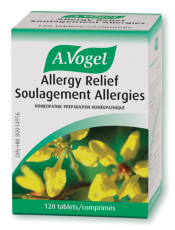What is hay fever rash?
The immune system is a defense against the plethora of pathogens trying to buy real estate in our body, utilizing our resources and impacting the normal functions. The body can either manifest the rash when local pollen comes in contact with the skin, or it can happen even when pollen is inhaled or ingested through normal breathing.
The rash is often characterized as itchy red bumps spread out around areas that either came in contact with the pollen or may manifest elsewhere if the reach is more due to internal processes.
What are the triggers that cause individuals to experience hay fever?
According to the Allergy, Asthma & Immunology Society of Ontario, it's estimated that 10-20% of Canadians are affected by allergic rhinitis, otherwise known as hay fever.
The pollen from one species in particular, known as ragweed, is considered to be the biggest culprit of hay fever symptoms. This species is a member of the Asteraceae family, highly prevalent across North America and capable of producing over a billion pollen grains each season. Other triggers of allergies can include certain foods, stings from a variety of insects, and even medications.
What options could help to alleviate the rash?
- Vitamin D. Researchers have acknowledged the role vitamin D plays in dermatology given the synthesis and activation of precursors as the sun comes in to contact with the skin. In a 12-week study, participants suffering from chronic hives related to allergies were randomized to receive either a combination of three anti-allergy medications and 600 IUs of vitamin D while the other group only received 4,000 IUs of vitamin D. The culmination of the study saw the 4,000 IU group experience a 73% reduction in the severity of hives, while the medicated group only saw a 33% improvement with no further benefits past the first week. This is an interesting demonstration of the power of natural interventions as the study was funded by a grant from the American College of Allergy, Asthma and Immunology as well as the UNMC Clinical Research Centre.
- Allergy Relief is a homeopathic preparation of a variety of ingredients, including plants from the Asteraceae family, one of the most common flowering families in Canada. Those taking this product, experienced an 88.5% improvement in their allergy symptoms, especially their runny and stuffed up nose. As it's a homeopathic preparation, the product is safe for pregnant and nursing mothers who may be experiencing perinatal depression or allergies.
- Marigold. Calendula officinalis is another member of the Asteraceae family originating out of southern Europe. Commonly used for the treatment of inflammatory conditions of the skin, this could prove to be a beneficial option for hay fever rash. The assessment report from the European Medicines Agency amalgamates many studies that demonstrates the benefits of marigold, even on small areas of broken skin for wound healing. What's important to note though is should you already have a sensitivity to members of the Asteraceae family, this option is not recommended.
- Quercetin. The polyphenol is known for its anti-inflammatory, anti-oxidant, and anti-allergy properties. Studies have shown that this agent has the ability to regulate the immune system and decrease the formation of antibodies in response to a harmless allergen such as that of ragweed. This in turn reduces the symptoms of allergies including the rash. Quercetin also helps to stabilize mast cells which release an agent known as histamine that contributes to the itchy sensation.
- Oatmeal. Your mind may immediately jump to thinking we're suggesting a large bowl full of oatmeal, but what is far more beneficial for the irritated tissue is an oatmeal bath. The oat formally known as Avena sativa, is in the family with barley, rye and wheat. Chemically speaking, the plant is highly concentrated in both starches and beta-glucans which provide a protective, water-holding barrier effect. There are also various phenol groups in the plant which are anti-inflammatory and anti-oxidant. A clinical trial conducted on 50 women showing moderate to severe dry skin demonstrated the use of oatmeal resulted in clinically significant improvements in skin dryness, moisture, and barrier.
- Echinacea cream. As an herb, we're very familiar with the ability of this plant to modulate the immune system which speaks to its use in fending off cold and flu. As a topical, this herb has been shown to help increase the amount of lipids present in the layers of the skin. This promotes the health of the barrier and makes it less likely that various pathogens or allergens enter the deeper layers, reducing the risk of allergic reactions. The alkylamides are the compounds that most heavily contribute to restoration of the epidermal barrier.
References:
https://www.ema.europa.eu/en/documents/herbal-report/final-assessment-report-calendula-officinalis-l-flos-revision-1_en.pdf
https://pubmed.ncbi.nlm.nih.gov/17373175/
https://pubmed.ncbi.nlm.nih.gov/20865844/
https://pubmed.ncbi.nlm.nih.gov/24507460/
https://pubmed.ncbi.nlm.nih.gov/25607907/
https://pubmed.ncbi.nlm.nih.gov/27272074/
https://pubmed.ncbi.nlm.nih.gov/28610718/
https://www.woundsresearch.com/article/9064






